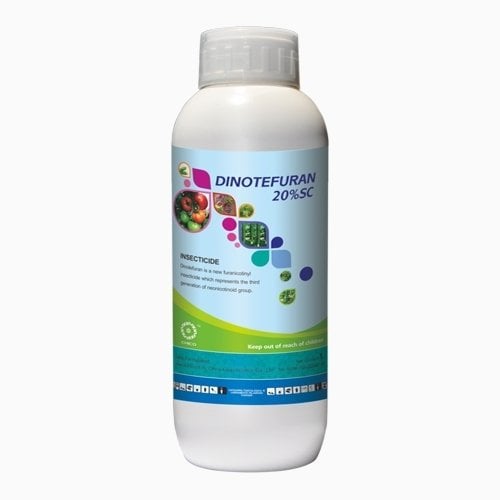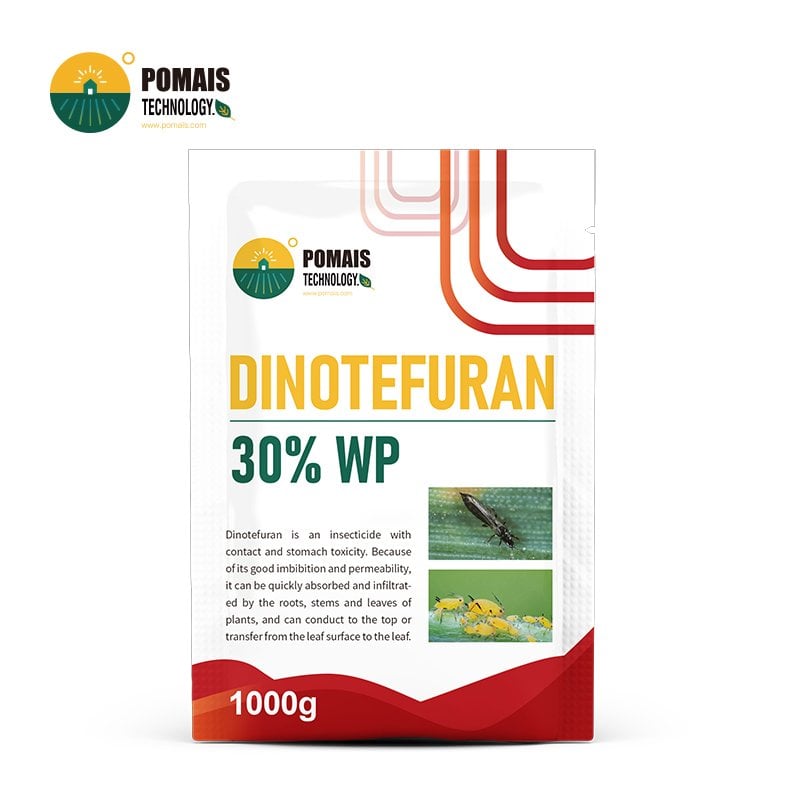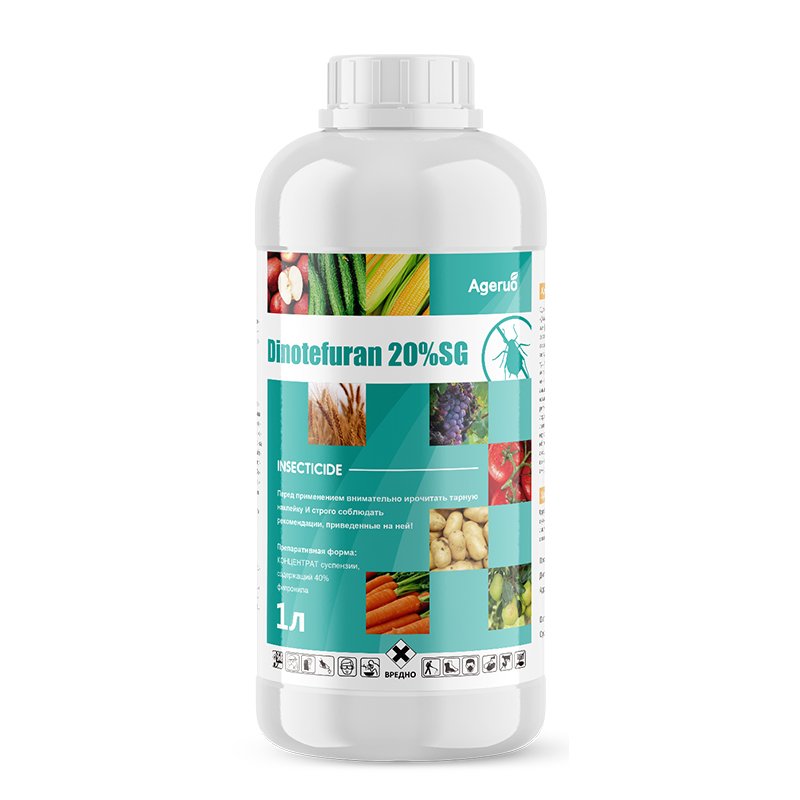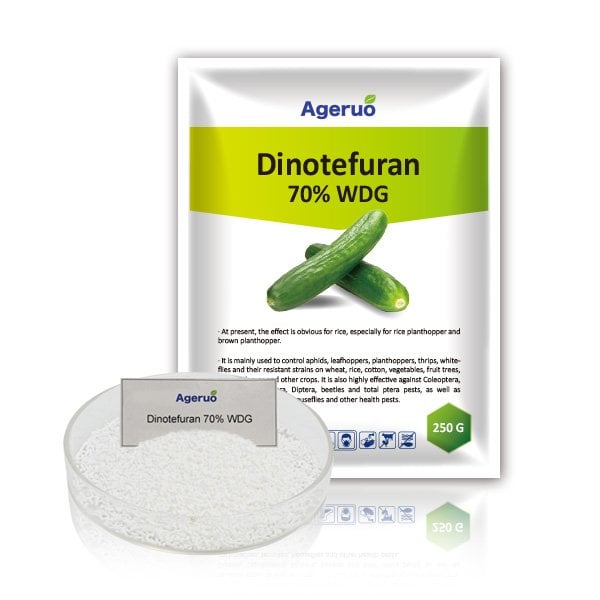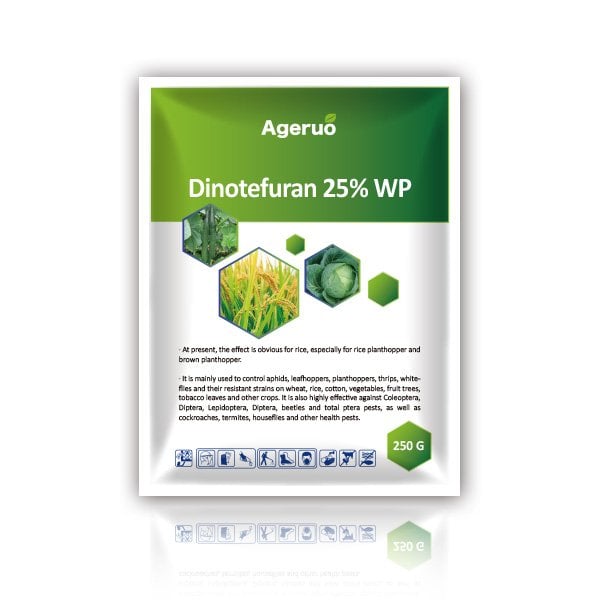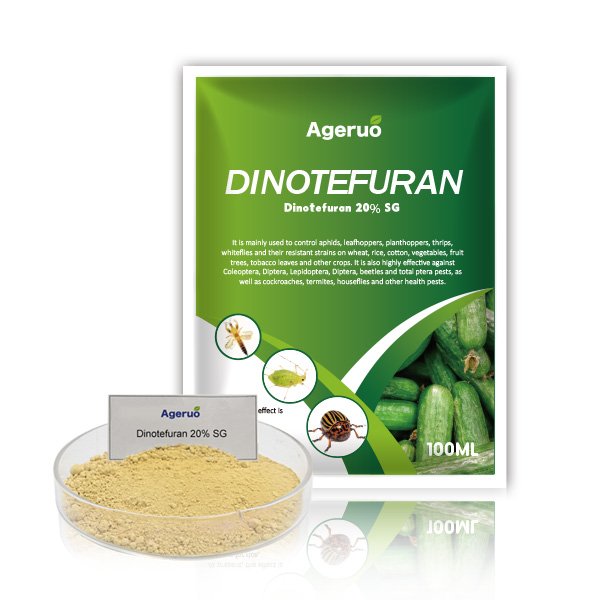How is Dinotefuran for Spider Mite Control?
Spider mites are among the most common pests that affect both outdoor and indoor plants. They are tiny, often invisible to the naked eye, but can cause significant damage by feeding on plant sap. Fortunately, Dinotefuran, a potent insecticide, offers an effective solution for controlling spider mites. In this guide, we’ll explore how Dinotefuran targets spider mites, its mode of action, and how to apply it effectively.
What are Spider Mites?
Spider mites are not actually insects but arachnids, related to spiders. They are typically very small, about the size of a pinhead, and often go unnoticed until significant damage has occurred. These pests suck the juice from plant cells, causing yellowing, stippling, and drying of leaves. Left untreated, spider mites can quickly spread, causing severe damage to crops, ornamental plants, and houseplants.
What is Dinotefuran?
Dinotefuran is a neonicotinoid insecticide, effective against a wide range of pests, including spider mites. It works by interfering with the nervous system of insects, leading to paralysis and death. Dinotefuran is often used in agriculture, horticulture, and home gardening for pest control. It is a systemic insecticide, meaning it can be absorbed by plants and target pests that feed on them, making it effective even against pests hidden within the foliage.
How Does Dinotefuran Work on Spider Mites?
Dinotefuran targets spider mites by disrupting their nervous system. Once the spider mites come into contact with or ingest the insecticide, it quickly acts to paralyze them, causing death. Its systemic action ensures that the insecticide moves through the plant, providing protection not only on the surface but also within the plant tissues, where spider mites often reside.
-
Contact and Ingestion: Spider mites either contact or ingest Dinotefuran while feeding on plant sap. As they feed, they consume the insecticide, which then disrupts their ability to function, leading to paralysis and death.
-
Systemic Effectiveness: Since Dinotefuran is absorbed by the plant, it moves through all parts of the plant, including stems, leaves, and flowers. This provides protection against spider mites that may be feeding on different parts of the plant, including those hidden in hard-to-reach areas.
-
Fast-Acting: Dinotefuran begins working almost immediately. Within hours, spider mites are paralyzed, and their ability to reproduce and cause damage is halted.
Why Use Dinotefuran for Spider Mite Control?
There are several advantages to using Dinotefuran for spider mite control:
1. Broad-Spectrum Control
Dinotefuran is effective against a wide range of pests, including spider mites, aphids, whiteflies, and other insect pests. This makes it a versatile solution for general pest management, especially in commercial agriculture or home gardening.
2. Systemic Protection
Unlike contact insecticides that only kill pests when they are sprayed directly, Dinotefuran’s systemic properties ensure that the entire plant is protected, even from pests that are not visible. This is especially important for spider mites, which can be difficult to spot due to their small size.
3. Long-Lasting Results
Once applied, Dinotefuran continues to protect plants for an extended period, ensuring that any new spider mites or other pests that come into contact with the plant will be eliminated.
4. Safe for Most Plants
When used according to the manufacturer’s guidelines, Dinotefuran is safe for most plants and does not cause damage or stress to them. It is a preferred choice for pest control in orchards, vineyards, greenhouses, and home gardens.
How to Use Dinotefuran for Spider Mite Control
Proper application of Dinotefuran is crucial to effectively control spider mites and prevent damage to plants. Here’s how to apply it:
1. Application Methods
Dinotefuran can be applied in several ways:
-
Foliar Spray:
Spraying Dinotefuran directly onto the leaves and stems is one of the most common application methods. Ensure that all surfaces of the plant are thoroughly coated, including the undersides of the leaves, where spider mites typically reside. -
Soil Drench:
For plants that are heavily infested or difficult to spray, a soil drench is an effective method. In this approach, Dinotefuran is diluted and applied directly to the soil. The plant absorbs the insecticide through its roots, providing systemic protection. -
Aerosol or Fogger:
In certain cases, an aerosol or fogger may be used to disperse Dinotefuran in areas with widespread infestations, such as in greenhouses or large indoor gardens.
2. Reapplication
Since spider mites can be resilient, you may need to reapply Dinotefuran. For best results, apply it every 7-14 days, especially if you notice any signs of renewed pest activity.
3. Timing of Application
It’s best to apply Dinotefuran early in the morning or late in the evening when plants are not under direct sunlight. This helps to reduce the chances of the insecticide evaporating or degrading quickly due to heat or sunlight.
Safety Precautions
While Dinotefuran is effective against spider mites, it is important to follow safety guidelines during application:
- Wear Protective Gear: Always wear gloves, goggles, and a mask when handling and applying Dinotefuran.
- Follow Manufacturer Instructions: Adhere strictly to the application rates and safety instructions on the product label.
- Keep Pets and Children Away: Ensure that pets and children stay away from treated areas until it is safe to re-enter. Generally, you should wait until the product has dried completely.
Conclusion
Dinotefuran is an effective and reliable solution for controlling spider mites on a wide variety of plants. With its systemic action, it ensures that both visible and hidden pests are eradicated, providing long-term protection. Whether you’re a home gardener, a greenhouse operator, or a large-scale grower, Dinotefuran offers an excellent way to control spider mites and protect your plants from damage.
By following proper application methods and safety precautions, you can ensure that Dinotefuran effectively tackles your spider mite problem and helps your plants thrive.
Spider mites are among the most common pests that affect both outdoor and indoor plants. They are tiny, often invisible to the naked eye, but can cause significant damage by feeding on plant sap. Fortunately, Dinotefuran, a potent insecticide, offers an effective solution for controlling spider mites. In this guide, we’ll explore how Dinotefuran targets spider mites, its mode of action, and how to apply it effectively.
What are Spider Mites?
Spider mites are not actually insects but arachnids, related to spiders. They are typically very small, about the size of a pinhead, and often go unnoticed until significant damage has occurred. These pests suck the juice from plant cells, causing yellowing, stippling, and drying of leaves. Left untreated, spider mites can quickly spread, causing severe damage to crops, ornamental plants, and houseplants.
What is Dinotefuran?
Dinotefuran is a neonicotinoid insecticide, effective against a wide range of pests, including spider mites. It works by interfering with the nervous system of insects, leading to paralysis and death. Dinotefuran is often used in agriculture, horticulture, and home gardening for pest control. It is a systemic insecticide, meaning it can be absorbed by plants and target pests that feed on them, making it effective even against pests hidden within the foliage.
How Does Dinotefuran Work on Spider Mites?
Dinotefuran targets spider mites by disrupting their nervous system. Once the spider mites come into contact with or ingest the insecticide, it quickly acts to paralyze them, causing death. Its systemic action ensures that the insecticide moves through the plant, providing protection not only on the surface but also within the plant tissues, where spider mites often reside.
-
Contact and Ingestion: Spider mites either contact or ingest Dinotefuran while feeding on plant sap. As they feed, they consume the insecticide, which then disrupts their ability to function, leading to paralysis and death.
-
Systemic Effectiveness: Since Dinotefuran is absorbed by the plant, it moves through all parts of the plant, including stems, leaves, and flowers. This provides protection against spider mites that may be feeding on different parts of the plant, including those hidden in hard-to-reach areas.
-
Fast-Acting: Dinotefuran begins working almost immediately. Within hours, spider mites are paralyzed, and their ability to reproduce and cause damage is halted.
Why Use Dinotefuran for Spider Mite Control?
There are several advantages to using Dinotefuran for spider mite control:
1. Broad-Spectrum Control
Dinotefuran is effective against a wide range of pests, including spider mites, aphids, whiteflies, and other insect pests. This makes it a versatile solution for general pest management, especially in commercial agriculture or home gardening.
2. Systemic Protection
Unlike contact insecticides that only kill pests when they are sprayed directly, Dinotefuran’s systemic properties ensure that the entire plant is protected, even from pests that are not visible. This is especially important for spider mites, which can be difficult to spot due to their small size.
3. Long-Lasting Results
Once applied, Dinotefuran continues to protect plants for an extended period, ensuring that any new spider mites or other pests that come into contact with the plant will be eliminated.
4. Safe for Most Plants
When used according to the manufacturer’s guidelines, Dinotefuran is safe for most plants and does not cause damage or stress to them. It is a preferred choice for pest control in orchards, vineyards, greenhouses, and home gardens.
How to Use Dinotefuran for Spider Mite Control
Proper application of Dinotefuran is crucial to effectively control spider mites and prevent damage to plants. Here’s how to apply it:
1. Application Methods
Dinotefuran can be applied in several ways:
-
Foliar Spray:
Spraying Dinotefuran directly onto the leaves and stems is one of the most common application methods. Ensure that all surfaces of the plant are thoroughly coated, including the undersides of the leaves, where spider mites typically reside. -
Soil Drench:
For plants that are heavily infested or difficult to spray, a soil drench is an effective method. In this approach, Dinotefuran is diluted and applied directly to the soil. The plant absorbs the insecticide through its roots, providing systemic protection. -
Aerosol or Fogger:
In certain cases, an aerosol or fogger may be used to disperse Dinotefuran in areas with widespread infestations, such as in greenhouses or large indoor gardens.
2. Reapplication
Since spider mites can be resilient, you may need to reapply Dinotefuran. For best results, apply it every 7-14 days, especially if you notice any signs of renewed pest activity.
3. Timing of Application
It’s best to apply Dinotefuran early in the morning or late in the evening when plants are not under direct sunlight. This helps to reduce the chances of the insecticide evaporating or degrading quickly due to heat or sunlight.
Safety Precautions
While Dinotefuran is effective against spider mites, it is important to follow safety guidelines during application:
- Wear Protective Gear: Always wear gloves, goggles, and a mask when handling and applying Dinotefuran.
- Follow Manufacturer Instructions: Adhere strictly to the application rates and safety instructions on the product label.
- Keep Pets and Children Away: Ensure that pets and children stay away from treated areas until it is safe to re-enter. Generally, you should wait until the product has dried completely.
Conclusion
Dinotefuran is an effective and reliable solution for controlling spider mites on a wide variety of plants. With its systemic action, it ensures that both visible and hidden pests are eradicated, providing long-term protection. Whether you’re a home gardener, a greenhouse operator, or a large-scale grower, Dinotefuran offers an excellent way to control spider mites and protect your plants from damage.
By following proper application methods and safety precautions, you can ensure that Dinotefuran effectively tackles your spider mite problem and helps your plants thrive.

